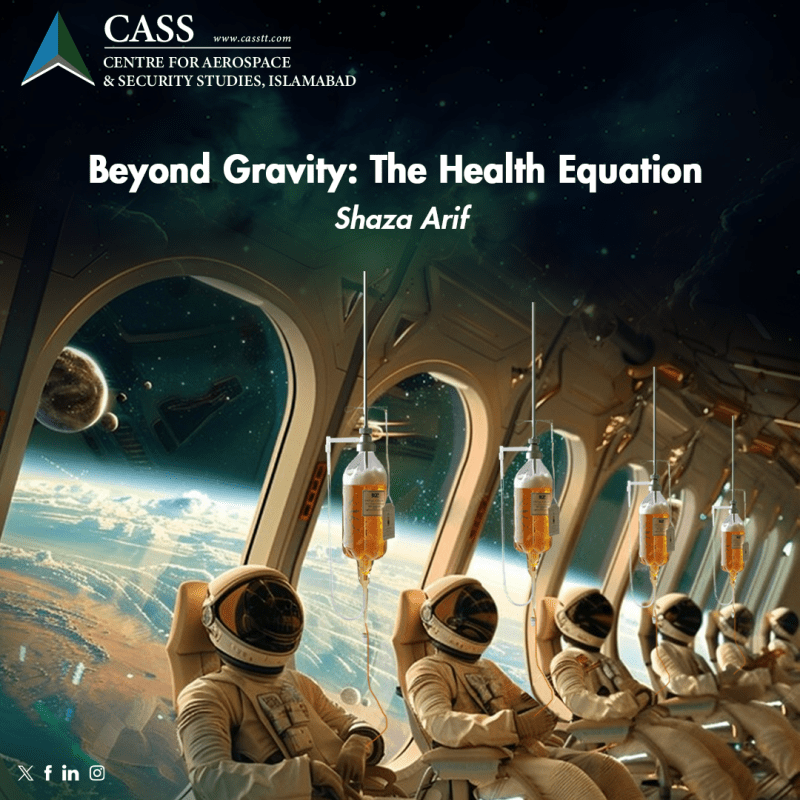Reaching the skies has been a commonly used metaphor as long as one can remember. Technological advancements have transformed this abstract notion into reality as space travel has become more frequent, not only for astronauts but also for civilians. However, space travel is not without its challenges, particularly in realm of human health.
While spacecraft safety is crucial, physical fitness of astronauts is equally important. As long as space travel was exclusively limited to professional astronauts, their physical fitness was ensured via extensive training and stringent selection criteria. In 1959, the military selected the first astronauts, who were traditionally military personnel with aircraft flying experience. Later, in 1964, when scientists were chosen for space missions, they were required to have a doctorate in engineering, medicine or a natural science subject. However, space missions are on the rise with a growing number of civilian tourists joining the ranks alongside traditional astronauts and trained pilots. This shift signals the expanding accessibility of space, driven by a burgeoning space tourism industry.
The global space tourism market is projected to reach USD 3.69 billion by 2028, with a compound annual growth rate (CAGR) of nearly 50% from 2024 to 2030. A 90-minute spaceflight by Virgin Atlantic costs approximately USD 450,000. This sum might seem huge, yet nearly 800 people were on Virgin Atlantic’s waiting list in 2023. This growth is driven by increasing interest from high-net-worth individuals and advancements in space technology, including reusable rockets. Inspiration4, a historic space mission by SpaceX, marked the onset of all-civilian space tourism.
However, with the expansion of space travel to a broader audience, significant risks have emerged, particularly due to the microgravity environment, which has shown adverse impacts on human health in several ways. Studies have shown that astronauts lose 1-2 percent of their bone density for every month spent in space. In most cases, astronauts are not able to recover from this damage after their return to Earth, leading to an increased risk of fractures and osteoporosis. In just two weeks, astronauts can lose up to 20 percent of muscle mass, impacting their physical capabilities. Likewise, in absence of Earth’s protective shield, astronauts are exposed to remarkably high levels of radiation almost equivalent to 150-6000 chest X-rays. Radiation exposure in space can potentially lead to neurodegenerative issues along with increasing probability of cancer. Moreover, nearly 15 to 20 percent of astronauts are likely to develop Spaceflight-Associated Neuro-Ocular Syndrome, leading to impaired vision. Prolonged exposure to microgravity and isolation can affect cognitive function, leading to issues such as impaired decision-making, decreased alertness and mood swings. This is especially critical for civilian tourists who may not have the same level of psychological resilience as trained astronauts.
Space travel can also weaken the immune system, making individuals more susceptible to infections. This is an area of growing concern, especially in the context of long-duration missions where medical intervention is limited. For civilians, who may not undergo the rigorous health screenings and training that astronauts do, this risk could be even more pronounced.
Space travel is not a luxurious getaway to the Bahamas – it’s a venture into an extreme environment fraught with challenges and unpredictable dangers. This has been seen with two astronauts stranded on the International Space Station (ISS) following a mission launched on 5th June. The eight-day space mission has turned into a nearly a nine-month stay due to thruster issues and helium leaks in the Starliner that was supposed to bring them back. The Starliner will now return uncrewed, with a later mission by Space X in February 2025 enabling homecoming of the two astronauts.
This episode highlights the inherent risks and complexities associated with space travel, where technical challenges can become a source of serious concern. While astronauts are trained to tackle such circumstances, long-term health effects can be severe due to unexpected, prolonged stay. Furthermore, this development highlights the potential dangers associated with long-duration space missions, such as crewed journeys to Mars, where the mission length could span several years. Ongoing experiments such as Crew Health and Performance Exploration Analog (CHAPEA) and Mars Desert Research Station (MDRS) are currently analysing impacts of the Martian environment on human health.
Civilian missions can, therefore, be particularly susceptible to risks due to participants’ relatively limited space experience and training. As space tourism grows and the potential for mass space travel by private entities increases, risks associated with individuals from diverse age groups and health conditions venturing into space require more serious research.
The Titan implosion underscored the severe consequences that can arise from inadequate safety measures in extreme environments like deep waters. These risks are magnified in the context of space travel, where the consequences of failure could be equally, if not more, catastrophic. Therefore, it is crucial to enforce strict adherence to safety protocols for future space missions, ensuring both integrity of the spacecraft and fitness of the crew. Beyond physical and psychological well-being, establishing a defined age bracket for civilian participants is essential to mitigate potential risks, especially given the heightened likelihood of anomalies in space. As space tourism expands, these safety measures must not be relaxed. The current legal and regulatory frameworks governing space travel, particularly for civilians, are still evolving. There is a need for more robust policies that address not just the safety of spacecraft but also the health and welfare of passengers. This includes standardised health assessments, clear guidelines on emergency medical care in space, and liability in the event of health-related issues.
Ultimately, space travel must be seen not as a high-end adventure but as a serious endeavour -one that demands meticulous preparation, strict adherence to safety protocols, and a clear understanding of the major health risks involved, particularly for and by civilians who lack professional training in this field.
Shaza Arif is a Research Associate at the Centre for Aerospace & Security Studies (CASS), Islamabad, Pakistan. She can be reached at [email protected].





